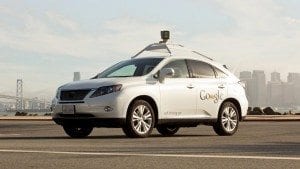
The future is finally upon us! Google’s magic self-driving cars are actively roaming the city streets in Google’s hometown of Mountain View, CA. Google has logged over 700,000 driver-less miles, with no accidents to report. Don’t worry – there is an actual person behind the wheel, ready to jump in if something goes awry. It has been Google’s goal for a long time to create a vehicle that can safely go beyond the capabilities of human-driven cars. Because, lets face it, humans are not good drivers. We get distracted, we get bored, we get tired; all of the issues a computer is not susceptible to.
The Google self-driving car is quickly learning to adapt to real-life scenarios present in city streets. According to Chris Urmson, director of the self-driving project, one mile of city street driving is much more complex than one mile of freeway driving. With the multitude of distractions present on city streets, Google’s self-driving car has a lot of opportunities to learn potential hazards. The car’s software is always being updated to detect distinct objects that it may come across in the road. From running children to cyclists sharing the road, the car is programmed to react to a variety of objects simultaneously, and more efficiently than a human could.
Google’s thinking is that a computer can process all of the distractions on the road better than a human can. What may seem overwhelming for a human driver on a city street would be a cake-walk for a computer to process. It is just a matter of taking the time to develop software smart enough to know the appropriate response to whatever scenario is presented on the road.
So how does the Google car autonomously traverse the ever-changing landscape of a city street? With laser beams, radars, and cameras, of course. The “robot vision” allows the vehicle to read stop signs rather than having to plan ahead to know where they are in advance. It is also able to adapt to changing road conditions due to construction interference or accidents.
Where the vehicle falls short is in scenarios dependent on random activities, such as merging, weather conditions, and turning right on a red. Like a 15-year-old with his permit, the Google car is tentative in offensive driving maneuvers.
The Google car is making great strides, but it is a long way off from every person having their very own self-driving car. The predicament lies in the unknown. Google cannot yet teach a vehicle to predict a scenario that is completely random, where human judgment would need to come into play. Google also faces the hardship of needing to maintain a 100% accident-free record for their autonomous vehicle, which sounds impossible. Considering there is a car accident every 8 seconds in the U.S., maintaining a clean driving record is nearly impossible for the every-day driver. If Google’s vehicle is responsible for a serious car accident, where another party is injured, the project would be majorly set back. Google faces a difficult task. But if any company in the world can do it, Google can!








